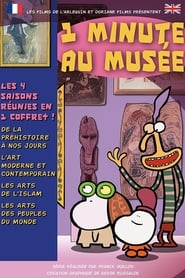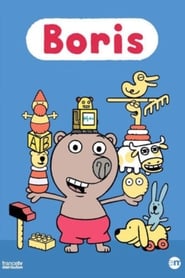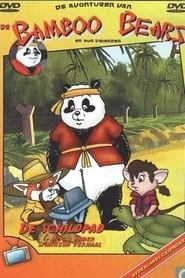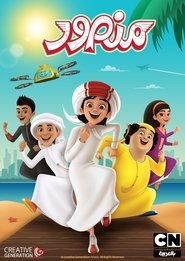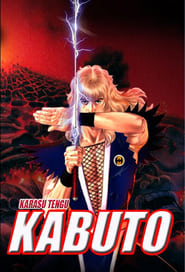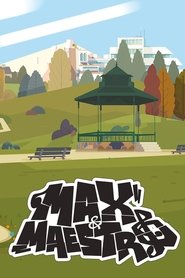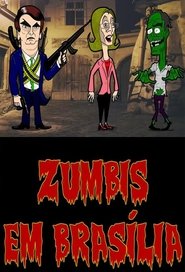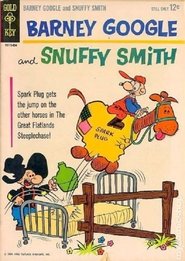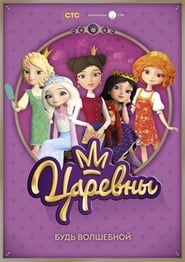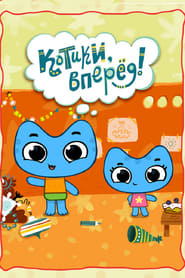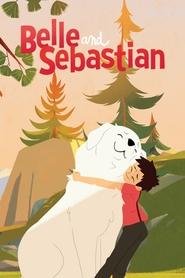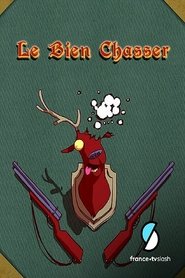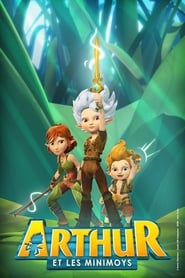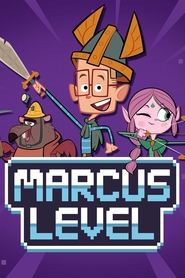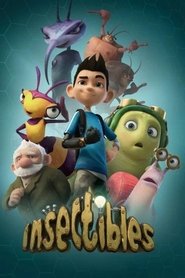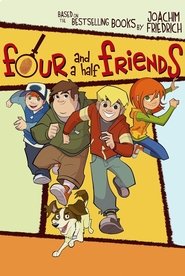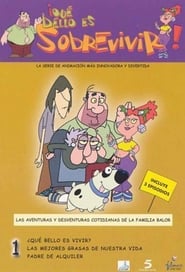Top Rated Animation TV Series - Page 436
-
1 minute in a museum
2004
1 minute in a museum
2004
star 8Nabi, Rafaël and Mona are small but boy can they talk up a storm as they comment, in their own particular way, on all of the masterpieces in the wonderful museums of our lovely country. They will span the ages from classical painting to modern art and Islamic art. It’s a great, hassle-free way of brushing up on your Art and sounding really smart at your next milk and cookies cocktail. -
Boris
2013
-
The Bamboo Bears
1995
The Bamboo Bears
1995
star 4Bamboo-Lee, Dah-Lee and Slo-Lee are three bears with a goal: to save the world before more species become extinct. But can the bears stand up to the spineless villains behind Ratco Corporation? -
Mansour
0000
Mansour
0000
star 6Mansour is an animated comedy series about an active, life-loving, 12 year old boy and his adventures with his best friends, Obaid and Salem. Whenever life throws this group of inseparable buddies an opportunity, they grab it with both hands and their everyday lives are made extraordinary through their wonderful adventures. Whether their escapades take place at home, in the mall or at school, or further afield, in the rainforests, pyramids and mountains of distant countries - Mansour and his friends share the same zest for life as they embrace and explore a world full of excitement and opportunity. -
Karasu Tengu Kabuto
1990
Karasu Tengu Kabuto
1990
star 8Those who have the blood of the Karasu Tengu in their veins must forever fight against the powers of darkness. Along with four other holy ninja warriors Genbu, Suzaku, Seiryu, Byakko, Karasu Tengu Kabuto fights against the evil god Kuroyasha Dôki and his underlings such as Junin-shu -
Max & Maestro
2018
-
Zumbis em Brasília
2018
-
Snuffy Smith and Barney Google
1963
star 5There's feudin', fussin' and a whole lot of good ol' fashioned fun goin' on as those back woods rascals, Barney Google and Snuffy Smith, rustle up a rib-ticklin' tub of mountain mirth. Barney and Snuffy are joined by the craziest collection of cantankerous characters ever to come out of them thar' hills, including Loweezy, Jughaid and Jerky Jockey for hours of down home country comedy. -
Little Tiaras
2018
Little Tiaras
2018
star 8The plot of the animated series "Tsarevna" is based on the adventures of five girls, whose images are based on the heroines of Russian folk tales familiar from childhood. Each of them – Princess Varvara, the Beauty of the Long Braid, Vasilisa, the Frog Princess, Daria, the Princess Nesmeyana, Princess Elena the Beautiful and Sleeping Princess Sonya - has amazing magical power, but does not yet know how to control it. In order to learn how to use their abilities, they arrive on the magical island of Divnogorye, where they will be taught by the great wizard Koschei the Immortal. -
Kit N Kate
0000
Kit N Kate
0000
star 1Kotya and Katya are two little kittens, brother and sister. Kotya is smart and sensible, and little Katya is a cute fidget. They love miracles and adventures, and a toy box helps them with this, in which you can find anything. Kotya and Katya go on wonderful journeys, using their motto "Kitties, go!", but always return home, to their beloved and loving parents. -
Belle and Sebastian
2017
Belle and Sebastian
2017
star 10When Sebastian, a young orphan living in the Alps, meets Belle, a huge white Great Pyrenees, they set off together on a series of fantastic adventures around the mountains. -
Klump
2018
-
Le Bien Chasser
2018
Le Bien Chasser
2018
star 7Even before being a manual on how to hunt well, Le Bien Chasser is above all a guide, even a bible on the hunter's way of life. Because hunting isn't just something you do: it's something you live! -
Arthur and the Minimoys
2018
star 7Arthur is a bright, clever and lively 10 year-old who spends his vacations at his favorite grandmother's house. And talk about vacations! Inside her garden there is a world invisible to the human eye. The world of… the MINIMOYS! One day, Arthur discovers a secret passageway that enables him to enter their world and become a MINIMOY himself! In fact, he becomes THE MINIMOY SAVIOR, helping these minuscule little people fend off all sorts of danger, including invasions by the armies of Maltazard, the MINIMOYS' sworn enemy, a despot who rules over the SEIDES. A dreamer and a bit of a loner, Arthur suddenly becomes a fearless hero, and along with his friends Selenia and Betameche, he is going to lead the little people to freedom. But with a trio like this, the road to victory is going to be full of surprises. -
Marcus Level
2014
-
Insectibles
2015
Insectibles
2015
star 10A boy and his grandfather are exposed to a shrink gas and come face-to-face with the grandfather's insect creations. Pint-sized, they try to stop an evil Queen and face other adventures. -
Animanimals
2013
Animanimals
2013
star 7The Animanimals are animals with little quirks. Each time, a different animal faces an absurd adventure that could only happen to them. -
Pop Secret
2006
Pop Secret
2006
star 10The Pop Secret, a group of three pre-teens named Mia, Kali, and Loli, are the most popular in the galaxy. While their fans admire their glossy and sparkly exterior, they are unaware that these seemingly superficial girls are actually skilled secret agents. -
Four and a Half Friends
2015
star 7Charly and his friends love solving mysteries while facing the challenges of growing up. This unlikely group of junior detectives – and their dog – will stop at nothing to find and solve cases they uncover in and around their hometown. And between the excitement, action and laughs, they'll find out a bit about themselves and each other along the way. They don't have superpowers, they aren't geniuses and they don't even look like TV stars, but these normal, unexceptional kids and their funny-looking dog achieve amazing things when they get together as the Charly & Co. Detective Agency.
 Netflix
Netflix
 Amazon Prime Video
Amazon Prime Video
 Apple iTunes
Apple iTunes
 Apple TV Plus
Apple TV Plus
 Disney Plus
Disney Plus
 Google Play Movies
Google Play Movies
 Paramount Plus
Paramount Plus
 Hulu
Hulu
 HBO Max
HBO Max
 YouTube
YouTube
 fuboTV
fuboTV
 Peacock
Peacock
 Peacock Premium
Peacock Premium
 Amazon Video
Amazon Video
 The Roku Channel
The Roku Channel
 AMC+
AMC+
 Kocowa
Kocowa
 Hoopla
Hoopla
 The CW
The CW
 Vudu
Vudu
 Starz
Starz
 Showtime
Showtime
 PBS
PBS
 Pantaflix
Pantaflix
 FXNow
FXNow
 Tubi TV
Tubi TV
 Kanopy
Kanopy
 Comedy Central
Comedy Central
 Crunchyroll
Crunchyroll
 Microsoft Store
Microsoft Store
 Redbox
Redbox
 Sun Nxt
Sun Nxt
 ABC
ABC
 DIRECTV
DIRECTV
 Crackle
Crackle
 Fandor
Fandor
 Plex
Plex
